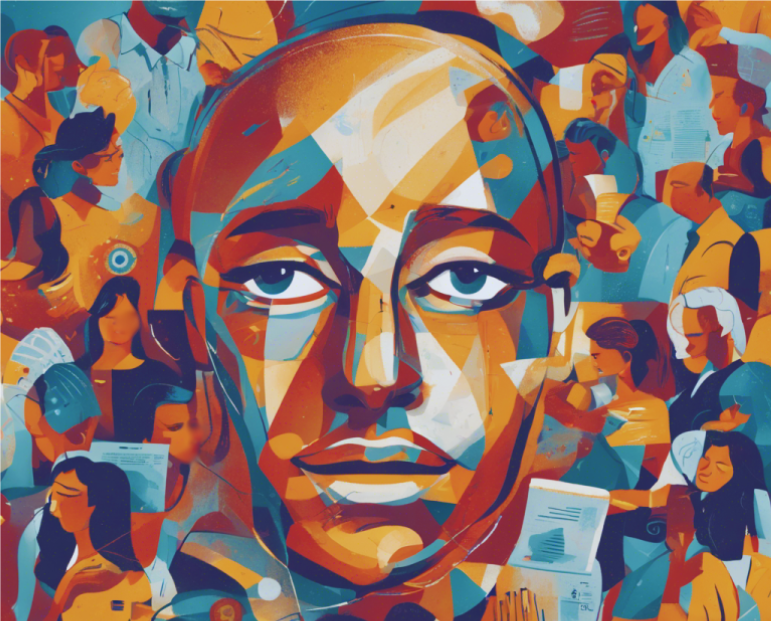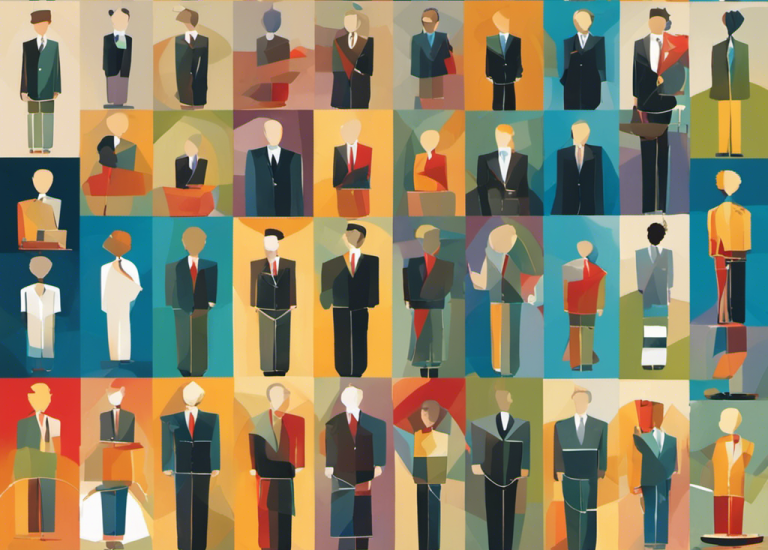EQ Insights: Real-World Examples of Emotional Quotient

In the ever-evolving realm of professional development, Emotional Quotient (EQ) has evolved into a buzzworthy term, celebrated as a pivotal ingredient for success. But amidst the buzz, what precisely constitutes EQ, and how does it manifest tangible impacts in the real world?
At its essence, EQ transcends mere trendiness; it is the dynamic interplay of emotions and intellect, shaping our responses and interactions. In practical terms, it involves skillfully navigating the intricate terrain of human emotions, both internally and among colleagues. This, in turn, leaves an indelible mark on the trajectory of professional endeavors.
As we unravel the intricacies of this coveted skill, we won't confine ourselves to theoretical discussions. Instead, we'll immerse ourselves in scenarios that mirror the everyday trials of the workplace. These scenarios serve as windows into the nuanced universe of Emotional Quotient, vividly illustrating its profound influence on team dynamics, collaboration, and the overall harmony of the workplace. Join us in deciphering the authentic essence of EQ and uncovering its significance in the fabric of real-world professional scenarios.
Scenario 1: Team Collaboration - The Innovation Summit
The Situation: Picture a bustling Innovation Summit at a high-tech startup, where teams gather amidst the hum of coding, vibrant post-it notes, and the aroma of artisanal coffee. Diverse groups armed with laptops and marker pens collaborate to sculpt the next groundbreaking project in an atmosphere charged with creative energy. The challenge? To conjure innovative solutions to real-world problems.
Ineffective EQ: Amidst this symphony of ideas, one team member disrupts the harmony. With impatience, they dismiss suggestions, cutting off their teammates mid-sentence and waving their hand dismissively. "That won't work," they interject, their tone brimming with skepticism. The room falls silent, tension palpable as team members exchange uneasy glances. The once-thriving atmosphere becomes stifled, marring the canvas of innovation. As the summit progresses, fewer ideas are shared, and the project's potential remains largely untapped.
Effective EQ: Now, envision a different scenario. The team leader, akin to a maestro, recognizes the unique value each team member brings. With an attentive demeanor, they actively listen to each contribution, nodding in encouragement and asking probing questions. "That's an interesting angle, Sarah. Could you elaborate on how we might implement that?" they inquire, inviting further exploration. Other team members chime in, building upon each other's ideas with enthusiasm. Positive body language and affirming nods create an inclusive environment where every voice is valued. As a result, the collaborative energy flourishes, and the project gains momentum. By the end of the summit, the team has generated a multitude of innovative solutions, laying the groundwork for a transformative project.
Real-World Example: Consider Google, a company renowned for its emphasis on emotional intelligence and collaboration. Google's former CEO, Eric Schmidt, famously stated, "We run this company on questions, not answers." This philosophy underscores the importance of fostering an environment where diverse perspectives are welcomed and individuals feel empowered to contribute. Google's commitment to fostering EQ among its employees has been credited with driving innovation and propelling the company's success in a highly competitive industry.
Scenario 2: Handling Constructive Criticism - The Art Gallery Unveiling
The Situation: Imagine stepping into an elegant art gallery, illuminated by spotlights, where professionals from various industries gather to witness the unveiling of each other's projects. Colleagues, dressed in an eclectic mix of attire, engage in conversations as the aroma of freshly brewed coffee fills the air, mingling with the anticipation of creative expression.
Ineffective EQ: Amidst the curated beauty, one artist stands defensively by their creation, arms crossed tightly over their chest, as if protecting their work from scrutiny. Constructive feedback is met with visible discomfort, their expression turning guarded as colleagues offer suggestions for improvement. "I don't see why I should change it," they murmur defensively, their tone conveying resistance rather than receptivity. The once-vibrant gallery atmosphere dims as tension mounts, casting an uncomfortable shadow over the gathering. Colleagues exchange uneasy glances, hesitant to offer further critique for fear of causing offense. The opportunity for constructive dialogue dissipates, leaving the artist isolated in their defensiveness and impeding the potential for growth and collaboration.
Effective EQ: Contrast this with another artist gracefully navigating the sea of feedback. Their body language exudes openness, shoulders relaxed, and a warm smile gracing their lips as they welcome colleagues' perspectives. With genuine curiosity, they invite critique, actively seeking input on how to refine their work. "Thank you for sharing your insights," they respond graciously, acknowledging each suggestion with genuine appreciation. Other attendees, inspired by this display of humility and openness, eagerly offer their perspectives, sparking a lively exchange of ideas. The once-stifled atmosphere transforms into a collaborative space where colleagues share in the growth of artistic journeys. As the unveiling progresses, the gallery buzzes with energy, each interaction enriching the collective experience. The artist emerges from the exchange not only with valuable feedback but also with a sense of empowerment and connection, poised to elevate their craft to new heights.
Real-World Example: Pixar Animation Studios is renowned for its commitment to fostering a culture of constructive feedback and collaboration. Director and screenwriter Andrew Stanton, known for his work on beloved films like "Finding Nemo" and "WALL-E," famously stated, "The films never get finished, they just get released." This ethos underscores the studio's emphasis on continuous improvement and the iterative nature of the creative process. By cultivating an environment where artists are encouraged to embrace feedback and iterate on their work, Pixar has produced some of the most beloved and critically acclaimed animated films of our time.
Scenario 3: Office Technology Glitch - The Digital Dilemma
The Situation: Picture a dynamic office space where the hum of technology is integral to daily operations. Clattering keyboards, soft conversations, and the glow of screens create an atmosphere of productivity. Teams rely heavily on technology to meet tight deadlines, their focus heightened by the soft whirr of printers and occasional laughter.
Ineffective EQ: Suddenly, panic sets in as a technology glitch disrupts the workflow. One team member's frustration boils over, their voice escalating as they point fingers and assign blame. "This is unacceptable! Why can't IT get their act together?" they exclaim, their tone laden with irritation. The tense atmosphere thickens as colleagues exchange uneasy glances, hesitant to speak up for fear of further escalating the situation. Collaboration grinds to a halt as team members retreat into their individual frustrations, hindering progress and exacerbating the impact of the glitch on productivity.
Effective EQ: In contrast, envision a team leader who responds to the technology glitch with composure and empathy. Recognizing the importance of maintaining morale and momentum, they gather the team together, fostering an open discussion about potential solutions. "Let's take a moment to regroup and brainstorm how we can address this challenge together," they suggest, their tone reassuring and inclusive. As team members share their ideas, laughter and camaraderie fill the room, creating a sense of camaraderie and solidarity. Together, the team creatively finds temporary workarounds, leveraging each other's strengths and expertise to navigate the digital dilemma. What initially seemed like a setback transforms into an opportunity for teamwork and innovation, strengthening the team's bond and resilience in the face of adversity.
Real-World Example: Atlassian, a leading software company known for its collaboration tools like Jira and Trello, emphasizes the importance of maintaining a positive team culture, especially during challenging times. In his book "Team Geek," former Atlassian engineer Ben Collins-Sussman emphasizes the value of "blameless post-mortems," where teams come together to analyze and learn from failures without assigning blame. By fostering a culture of psychological safety and shared responsibility, Atlassian empowers its teams to approach challenges with resilience and creativity, ultimately driving innovation and success.
In each scenario, the strokes of Emotional Quotient paint a compelling narrative across diverse professional canvases. As you navigate your unique workplace landscape, consider the choices you make—the brushstrokes of empathy, understanding, and authentic connection that transform challenges into masterpieces of collaboration, growth, and positive change.
While the scenarios we present here are hypothetical, it's essential to underscore that Emotional Quotient (EQ) is far from a mere concept—it's a dynamic force that constantly resonates in our real-world interactions.
Looking to strengthen your EQ and leadership capabilities? Delve into our Agile Emotional Intelligence [EQ] course, available both as a standalone option and as an integral component of the Technical Leadership Certificate.
Author's Note:
This article represents a hybrid blog, a collaborative creation combining the creative content and personal experiences from our staff with the capabilities of AI language technology. The content aims to blend human-driven storytelling and AI-assisted precision, showcasing the potential synergy between human creativity and artificial intelligence in the realm of content creation.
Subscribe Here!

